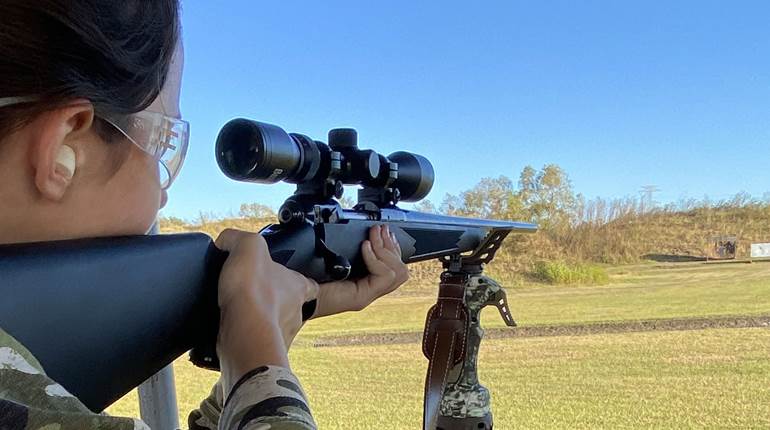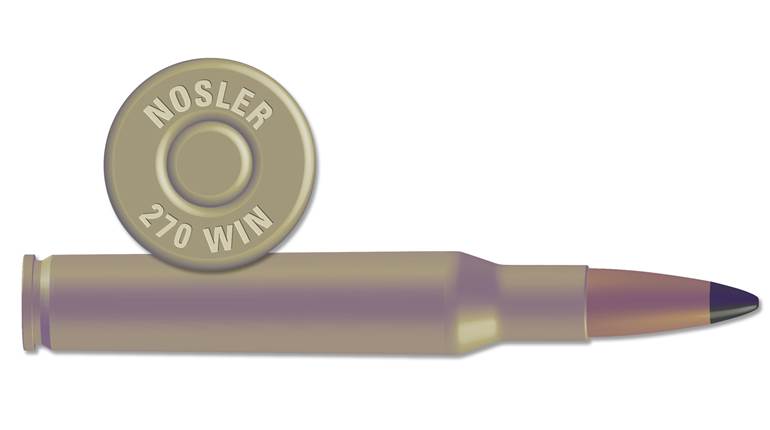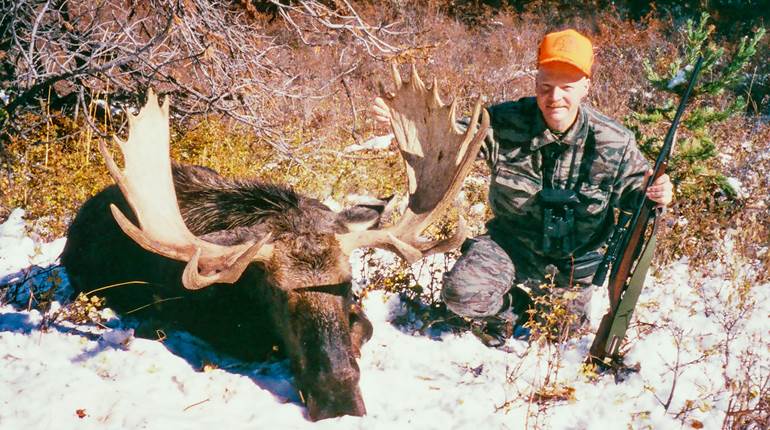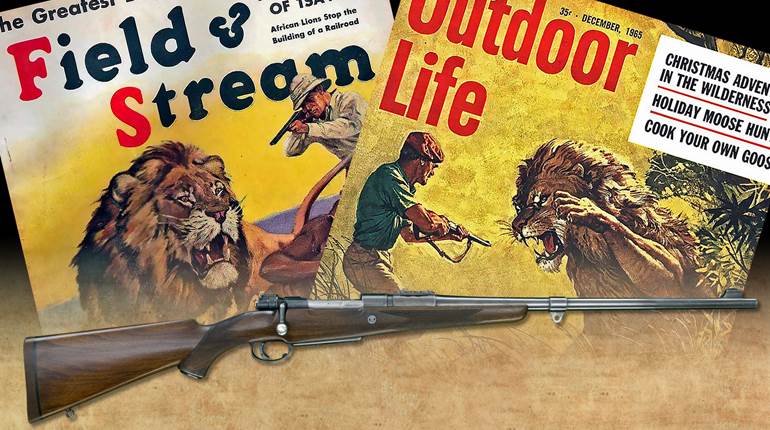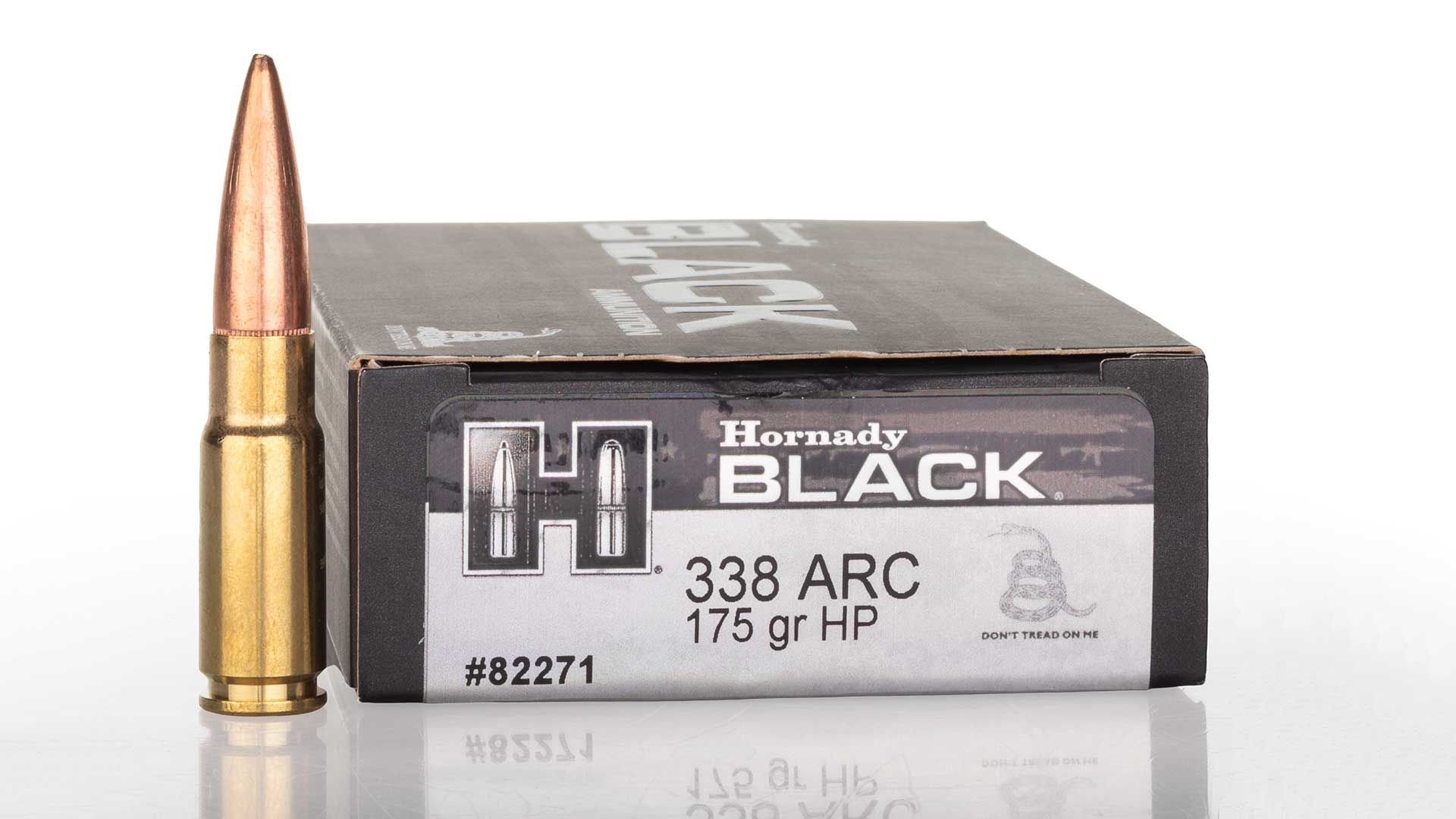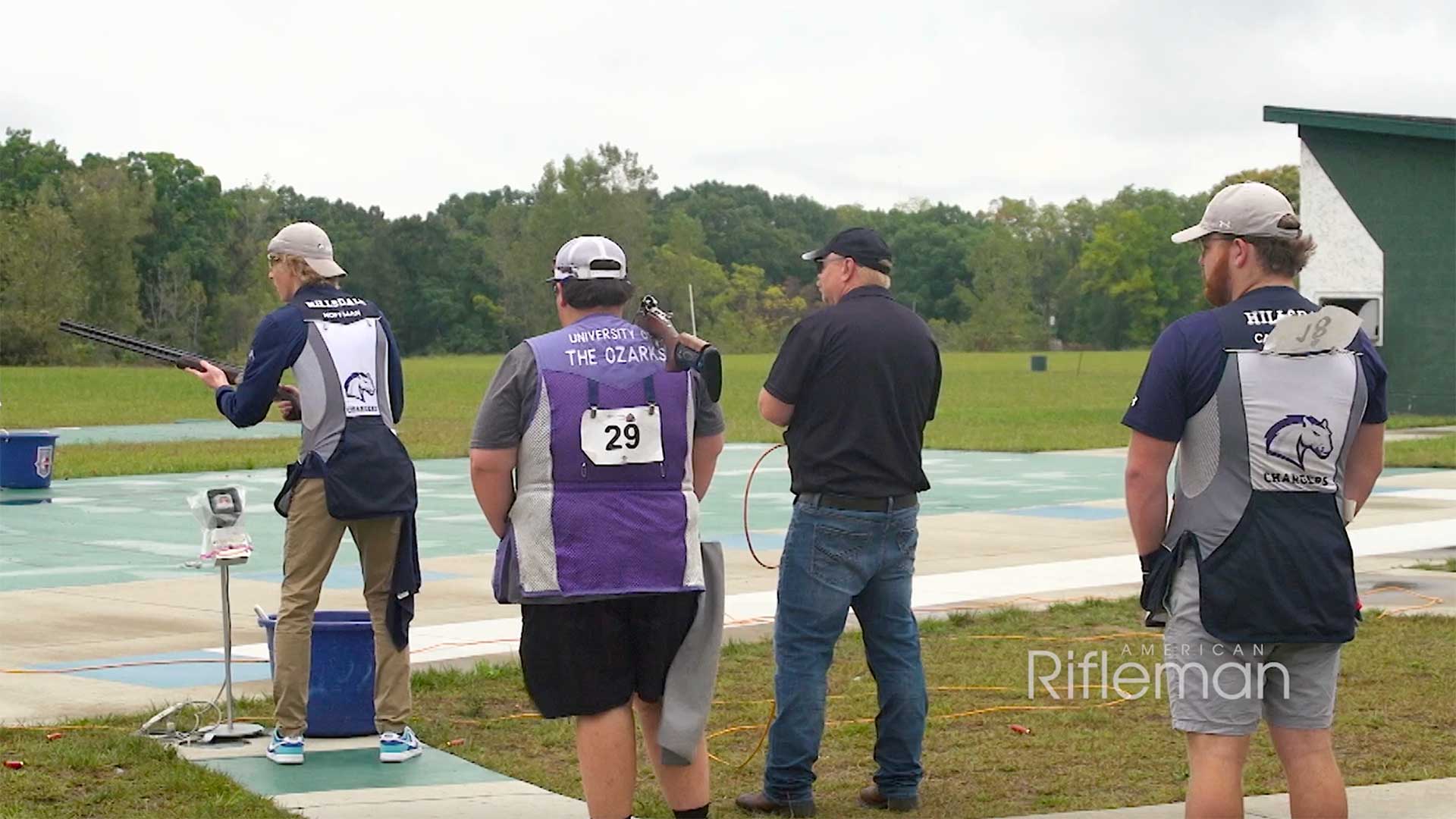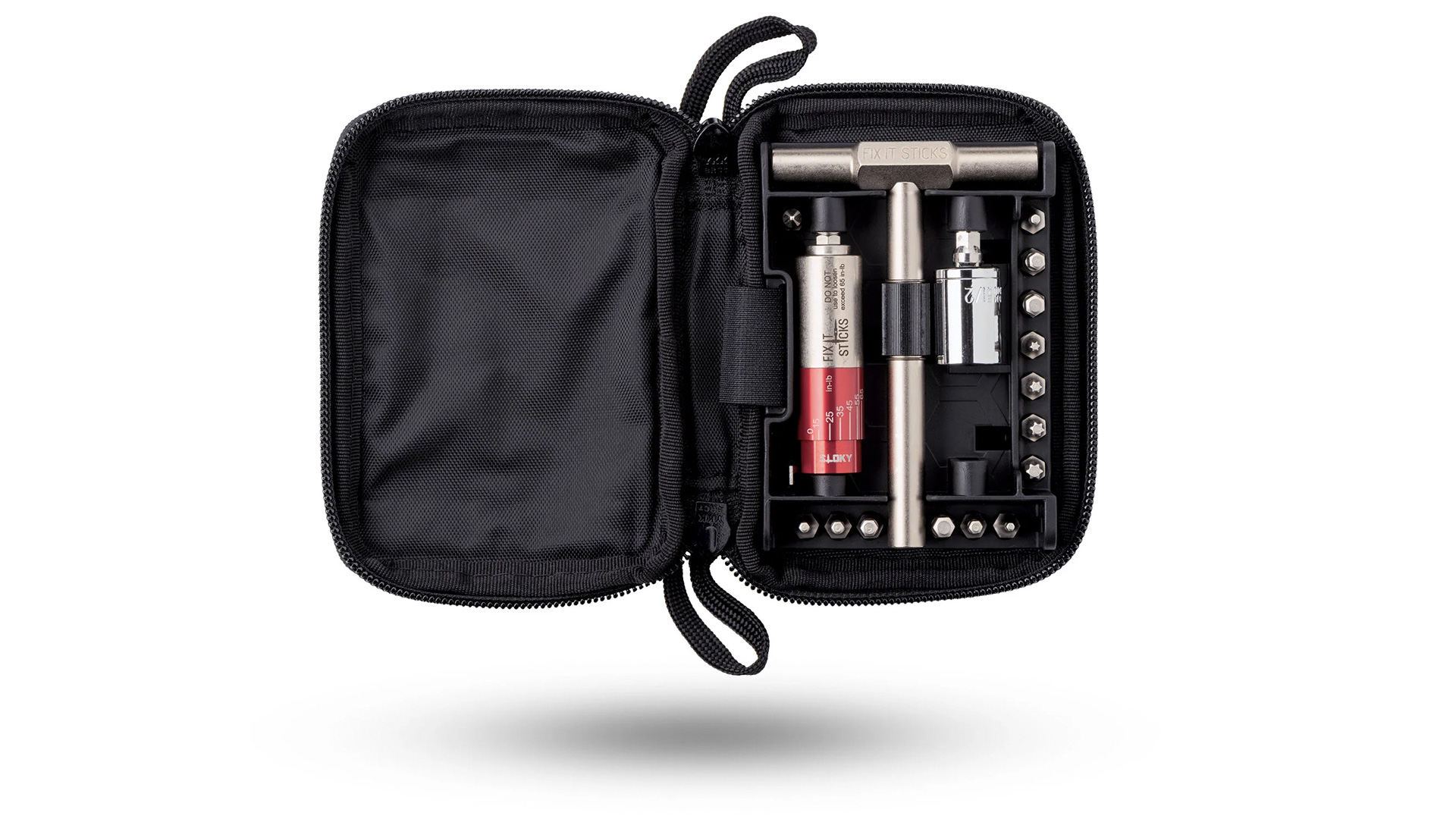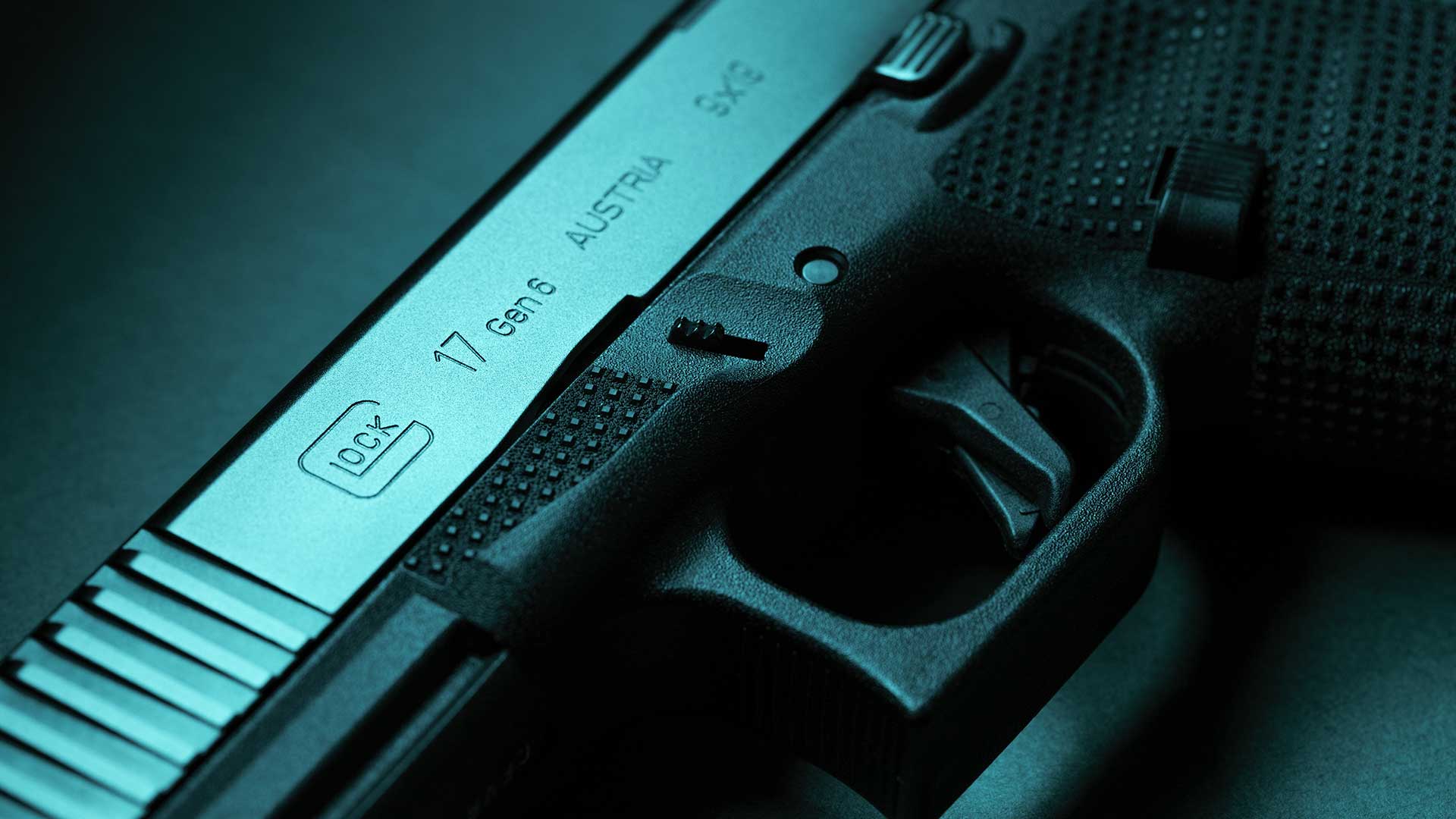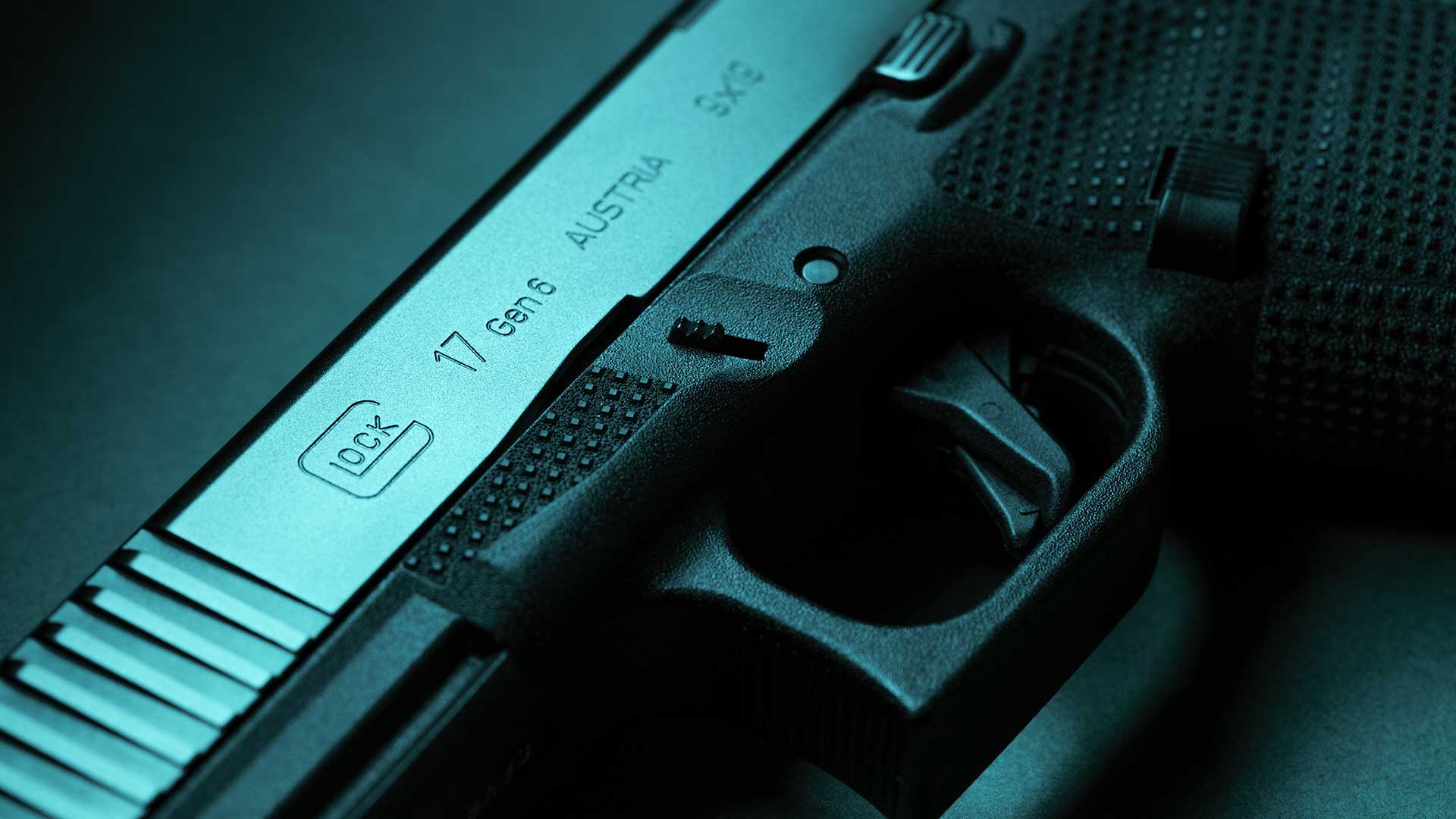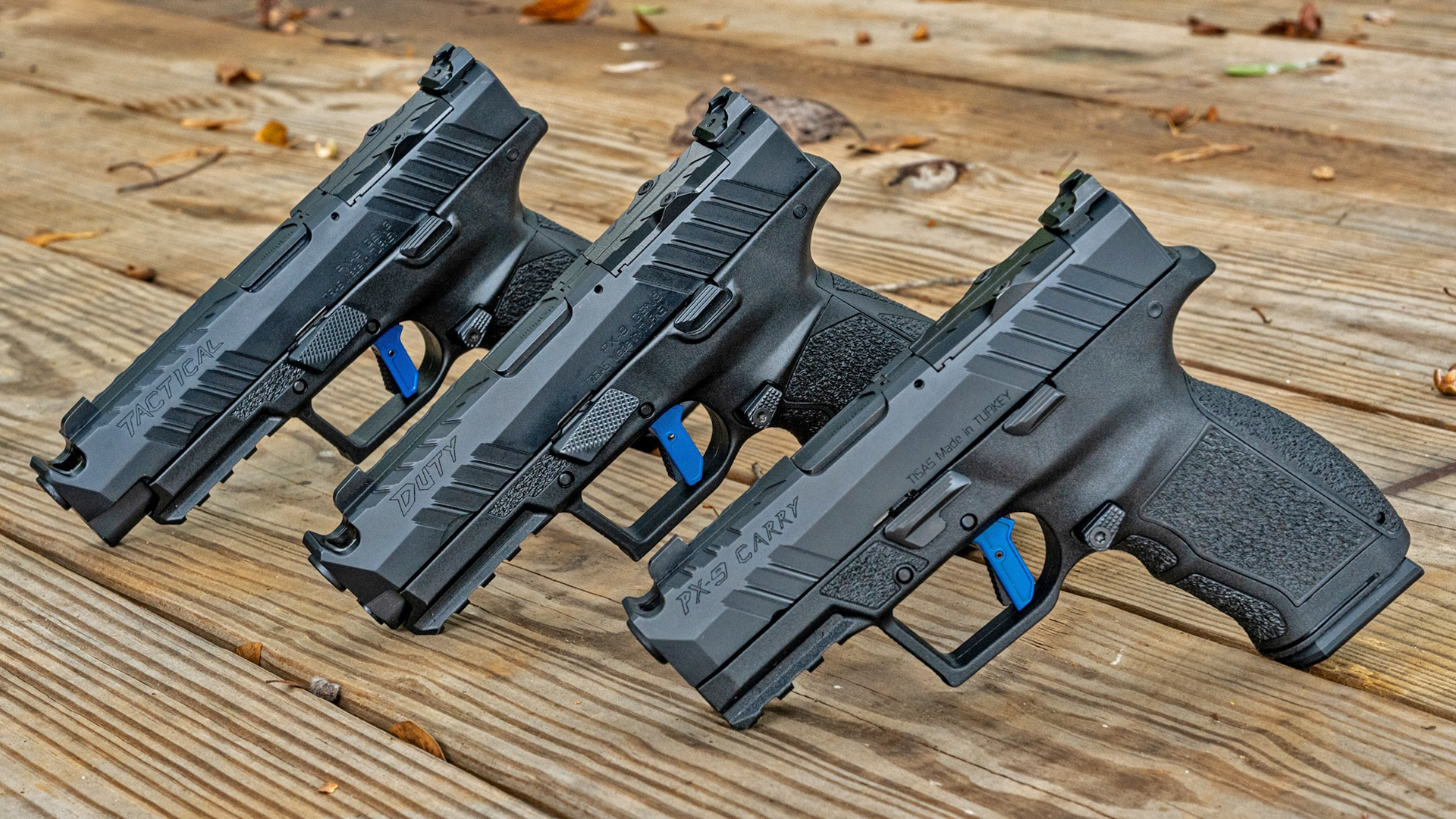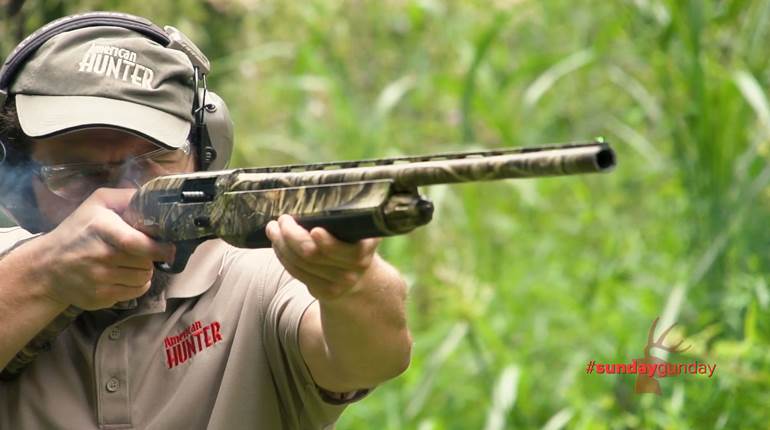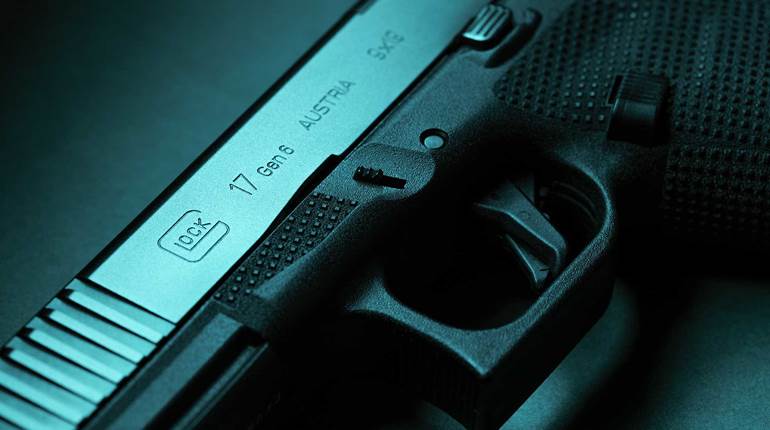
The author has found his Winchester Model 70 Classic Featherweight Jack O’Connor Commemorative in .270 Win. to be one of his most accurate rifles with a variety of factory loads.
Elmer Keith famously described the .270 Winchester as a “damned adequate coyote rifle.” Much less famously, but only slightly more fairly, a much younger version of myself identified the .270 Win. as “perfect for pronghorns.”
The last was an incomplete thought, but I’ll stand by it. The .270 Win. really is a quintessential pronghorn cartridge because pronghorns are, pound for pound, extremely tough. More importantly, they are usually hunted on the windy plains. It’s a simple fact that 0.277" bullets hold up far better in the wind than 0.257" and 6 mm bullets, which, until recently, have been our most common alternatives.
The “new discovery” of the 6.5 mm (0.264") has altered this landscape. Here’s a big surprise: The 6.5 mm is not new. The 6.5 mm Creedmoor is an awesome little cartridge, and certainly the hottest-selling center-fire phenomenon I’ve seen, but ballistically it does little that the 6.5x55 mm Swedish couldn’t do back in 1891. Compared to the Creedmoor the .260 Rem. has languished, but the two are ballistically very similar. Bullets for 6.5 mm cartridges tend to be long for caliber and, with good aerodynamics, hold their velocity well. Started at moderate speed with minimal recoil, they remain supersonic to amazing ranges, making them marvelous for long-range target shooting. In my opinion, however, these three similar 6.5 mms, despite the magical properties currently attributed to them, do not equal the 96-year-old .270 Win. as hunting cartridges.

VERSATILE AND POWERFUL
Can I justify this heresy? I think so. Based on the longer .30-’06 Sprg. case with more powder capacity, the .270 Win. has always been loaded fast, with a 130-gr. bullet exceeding 3000 f.p.s.
The 0.277" bullet was an oddball choice. Winchester’s engineers must have considered the 6.5-’06, perhaps they also considered the 7 mm-’06 (which, in 1957, became the .280 Rem.). Had they gone either direction in 1925, we may not be having this discussion. However, in xenophobic post-World War I America there was little chance for a cartridge with a metric designation. The 0.277" bullet has 0.013" greater frontal area than the 6.5 mm (0.264")—and just 0.007" less than the 7 mm (0.284"). Folks, these diameters are too similar to fight over. The difference lies in case dimensions, which allow the .270 Win. to achieve more velocity than is possible with our “mild” 6.5 mms—and also more velocity than is possible with the “mild” 7 mms. These include two of my favorites, the 7x57 mm Mauser and 7 mm-08 Rem. Ballistically similar, both are awesome, but, lacking the case capacity of the .270 Win., they cannot equal its velocity or downrange energy yields. It’s almost that simple, folks; but I’ll come back to that “almost.”
Regardless of bullet diameter, it is possible to use larger case dimensions to burn more powder and increase velocity. This is not new. In the late 1950s, Jack O’Connor, great champion of the .270, suggested that the then-new .264 Win. Mag. (1958) couldn’t do anything that his beloved .270 couldn’t do. I love my .264, but I think Professor O’Connor was correct. The .270 Win. can propel a 140-gr. slug to 3000 f.p.s. The .264 burns more powder, but can’t exceed that velocity by enough to matter. The 6.5 mm-284 Norma can do much the same, likewise the new 6.5 mm PRC. These three are pretty much equal to the .270, but as hunting cartridges at normal ranges cannot be considered significantly better.
A few years later, when the 7 mm Rem. Mag. was introduced (1962), O’Connor’s spin was much the same—it couldn’t do much more than his .270. We tend to think of the 7 mm Rem. Mag. as a “fast and powerful” cartridge. It is, but so is the .270 Win. Remembering that minimal 0.007" difference in bullet diameter, in bullet weights up to 150 grs., there isn’t enough difference between the .270 Win. and 7 mm Rem. Mag. to fight about. The .280 Rem. is also a great cartridge, but its performance is so similar to the .270 that serious arguments are silly.
We can continue to play the velocity game with larger cases and more powder. In the 6.5 mm we now have the super-fast 26 Nosler and 6.5-300 Wby. Mag., and in the 7 mm we have the 7 mm STW and 7 mm RUM. They are faster and deliver more energy downrange at the cost of longer actions, more recoil and blast—and reduced barrel life. The 0.270" caliber can play this game, too. The .270 Wby. Mag. fits in a .30-’06-Sprg.-length action and remains one of the fastest and flattest-shooting numbers in the cartridge universe. The newer .270 WSM isn’t quite as fast, but it fits into a short bolt-action.

“ALMOST” = BULLETS
In 1925, far fewer cartridge choices existed. The .30-’06 Sprg. was king, but the 10-year-old .250 Savage had a significant following, as did the early military 6.5 mms and the 7x57 mm. It seems apparent that Winchester’s engineers wanted a cartridge that was more powerful than the .250 Sav. and existing 6.5 mms, shot flatter than the 7x57 mm and had less recoil than the .30-’06 Sprg. The .270 fit the bill on all accounts. Back to that “almost,” however, the .270 has long been cheated in regard to projectiles.
Original offerings were the fast 130-gr. load and a 150-gr. bullet at about 2850 f.p.s., speedy for the day. The 140-gr. bullet was added later. In 0.277" these bullets are not “light-for-caliber,” and they are not superstars in sectional density (SD)—at 0.242, 0.261 and 0.279, respectively. This compares favorably with popular .308 bullets in 150, 165 and 180 grs., which have SDs of, respectively: 0.226, 0.248 and 0.271. This means that, all else being equal, the .270 will penetrate better. Of course, 6.5 mm bullets have traditionally been longer and heavier for caliber. The long-standard 140-gr. 6.5 mm bullet has an SD of 0.287, which standard 0.277" bullets cannot match. Note, however, that 0.277" bullets have slightly greater SD than 7 mm bullets of like weight!
Construction being equal, SD offers a reasonable index of a bullet’s ability to penetrate. Of course, it always depends on what you want to do. The .270 was envisioned as a hunting cartridge, and its bullets perform well on game. In other ways 0.277" bullet development has lagged behind both the 6.5 mm and 7 mm. Sectional density says nothing about a bullet’s ability to overcome air resistance in flight. This comes down to aerodynamics.
No .270 bullet can match the penetrating qualities of the 7 mm’s 175-gr. bullet or the 6.5 mm’s 160-gr. slug. However, these days few of us actually hunt with such heavyweights. In the more common weights, up to 150 grs., the .270 hangs in just fine. As time went on, however, both 6.5 mm and 7 mm bullets received more attention in the aerodynamics department. Recent interest in extreme-range shooting has only accelerated the trend. To a large extent that is because, for whatever reason, the .270 has never been considered a target cartridge, and certainly not a long-range target cartridge.
Ballistic coefficient (BC) is the index of a bullet’s ability to overcome resistance in flight. Historically, a BC of about 0.500 was considered to be very aerodynamic. Recent developments have left this number and the 0.277" bullet in the dust. Uniquely, Berger offers five aerodynamic 0.277" bullets, up to a 170-gr. EOL with a whopping BC of 0.662. It is perhaps telling that Berger, a favorite with the accuracy crowd, does not make any specific “target bullets” in 0.277". Hornady has a new 145-gr. ELD-X .277" bullet with a very high BC of 0.536. It is demonstrative of current trends that Hornady offers a half-dozen 6.5 mm bullets with higher BCs, up to its 6.5 mm 147-gr. ELD Match with an off-the-chart BC of 0.697. In extreme-range competition the .270 cannot compete simply because proper bullets designed for such use do not exist.
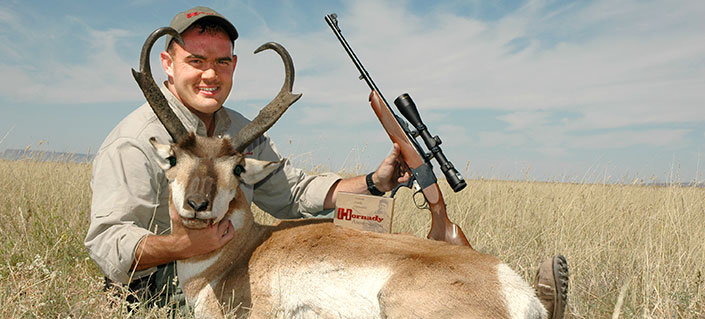
ACCURACY
Is this because the .270 Win. lacks the inherent accuracy? My old friend, astute rifle guy Dave Petzal of Field & Stream, concluded the answer was “yes,” but primarily for lack of super-accurate bullets.
Benchrest and extreme-range shooting are specialized pursuits, neither of which have much to do with taking game at normal field distances. Hunting is my primary interest, and my experience has been different. In raw accuracy I have found the .270 Win. to often be exceptional. In the past 40-odd years I’m sure I’ve benched dozens of .270s, and I haven’t yet seen one that grouped horribly.
For years, I had a walnut-stocked Dakota Model 76 that was a solid minute-of-angle (m.o.a.) rifle with almost anything. A Kimber Mountain Ascent .270 cut that in half with some loads. Donna’s left-hand MGA .270 is about three-quarter m.o.a.; our .270 Blaser barrel is about the same and an O’Connor Commemorative .270 on a Model 70 Featherweight action shot 1/3" groups right out of the box!
Last year retired custom maker Joe Balickie called me with a .270 he’d built decades ago and had on consignment. Based on the only left-hand Carl Gustav action I’ve ever seen, it came topped with a vintage 2-7X Leupold scope. Its first group put three 130-gr. GMX bullets into a quarter-inch. This rifle “likes” tough homogenous-alloy bullets. If velocities are similar it puts Barnes TSX and GMX into the same group, but opens up a bit with lead-core bullets.

BOTTOM LINE
I love to shoot tight groups, and I like to ring steel at distance, but I am not a benchrest or extreme-range competitor. During the past 15 years, my wife, Donna, has used the .270 more extensively than I have. Provided extreme range isn’t your thing, I hope we can concede that the .270 Win. is a great choice for almost all deer hunting and extremely useful elsewhere. No, we don’t shoot big bears or buffaloes with the .270, but on game up to elk, bullet performance is awesome, recoil is pleasant and the .270 shoots flat enough to simplify most shots.
Donna has taken more elk-size game with the .270 than I have (with no issues). Just recently, in Mongolia, she went off by herself to hunt the Asian wapiti. With the .270 barrel on her Blaser, when a great bull offered a quick shot at 250 yds., she put her .270 over her knees and killed it cleanly with a single shot. Elsewhere, a couple of days later, shooting my .300 Wby. Mag. rested over my pack, I got a shot at about the same distance with the same result.
On numerous African hunts we’ve shared her MGA .270—and our Blaser .270 barrel—on a wide variety of plains game. I used to question the .270’s adequacy for tough game such as hartebeest, sable, wildebeest and zebra. Donna has made me a true believer. The .270 is enough gun!
This past July, realizing I had a special rifle in the Balickie .270, I spent nearly a month with it in Namibia. I didn’t shoot a lot, but it accounted for everything I wanted to shoot: tough stuff, gemsbok, hartebeest and wildebeest, out to 400 yds. One morning, professional hunter Fred Burchell climbed a rocky knob and spotted a nice kudu bull tending cows in the valley beyond. Circling to get the wind right, we came up over a little ridge and caught him in thick thornbush below. Off sticks, at about 200 yds., I fired, but he turned away just as the trigger broke. It was purely my fault that I needed a second shot.

Donna and I have both used the .270 a lot in Africa. It is not enough gun for eland, but fine for the general run of antelopes, pigs and zebras. The O’Connors also used the .270 for a lot of African game. However, Professor O’Connor was best-known for his sheep hunting, inextricably linked to the .270. In his day, with poor optics and no laser rangefinders, the shooting distances bandied about today were unthinkable. Even so, it’s a question I’ve long pondered: Is the .270 really an ideal choice for mountain game?
Over the years I’ve taken a number of sheep and various wild goats with .270s. This last group has included big, tough goats like ibex and our Rocky Mountain goat. Never a problem, but it’s always about confidence. In mountain hunting, one must have confidence. In addition to being physically challenging, sheep and goat hunts often come down to just one shot that you can’t afford to blow—risky shots are unacceptable. My buddy Joe Bishop has taken most of his mountain game with a Sako in 7 mm Rem. Mag. He has confidence in it, but, as we’ve seen, with the common 140- and 150-gr. bullets there isn’t much real advantage over a .270. In those big Asian mountains I’ve usually defaulted to a fast .30, not because I felt the extra power mandatory, but because it gave me more confidence.
Also, it depends on what else is on the menu. O’Connor took multiple grizzlies and moose with his .270s incidental to his sheep hunting because that’s what he was carrying. I never inferred that he thought it the ideal choice. I haven’t been so lucky. In 2017, on a backpack hunt in Alaska, I had tags for both sheep and grizzly. I thought about a light .270, but, thinking about the bear, I defaulted to a .300. I never saw a bear, but I did take a ram at 120 yds. I could have been carrying a .243 and would have done just fine.
On that same 2018 Mongolian hunt, Donna and I had opportunity to take Altai argali, the largest wild sheep in the world. If there was ever a sheep for which the .270 is questionable, this is it: 400 lbs. and the costliest shot either of us will ever take. I had a .300 Wby. Mag. barrel on my Blaser, shooting 200-gr. ELD-X. She clung to her .270 Win. Blaser, shooting 130-gr. SST.
Donna did her stalk with our outfitter, Kaan Karakaya of Shikar-Safaris, one of the most experienced hunters alive on these big sheep, and he described her stalk as the toughest he’s ever done. We’d glassed rams at the bottom of a big ridge, with a plan to circle west and come in above them. After four hours, with the outcome unlikely, I stayed at a vantage point while Donna and Kaan went on alone. Three hours later, almost at sunset, I thought it was game over, I had no idea where they’d gone. Then came the solid thump of her bullet hitting, followed by the sound of her shot. They were two miles away at the base of the ridge with a magnificent ram, stalked to 180 yds. and taken perfectly with her little .270.
As I’ve said, the .270 really is perfect for pronghorn, but also perfect for a whole lot more. The older I get the more I think Professor O’Connor was right all along. At the ranges most of us actually shoot, it equals or exceeds most of our vaunted 6.5 mm and 7 mm cartridges, and it gets the job done.












